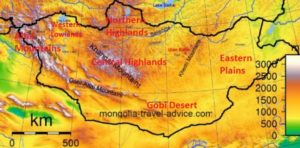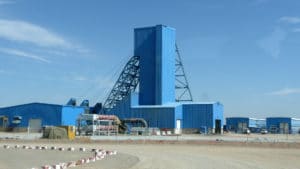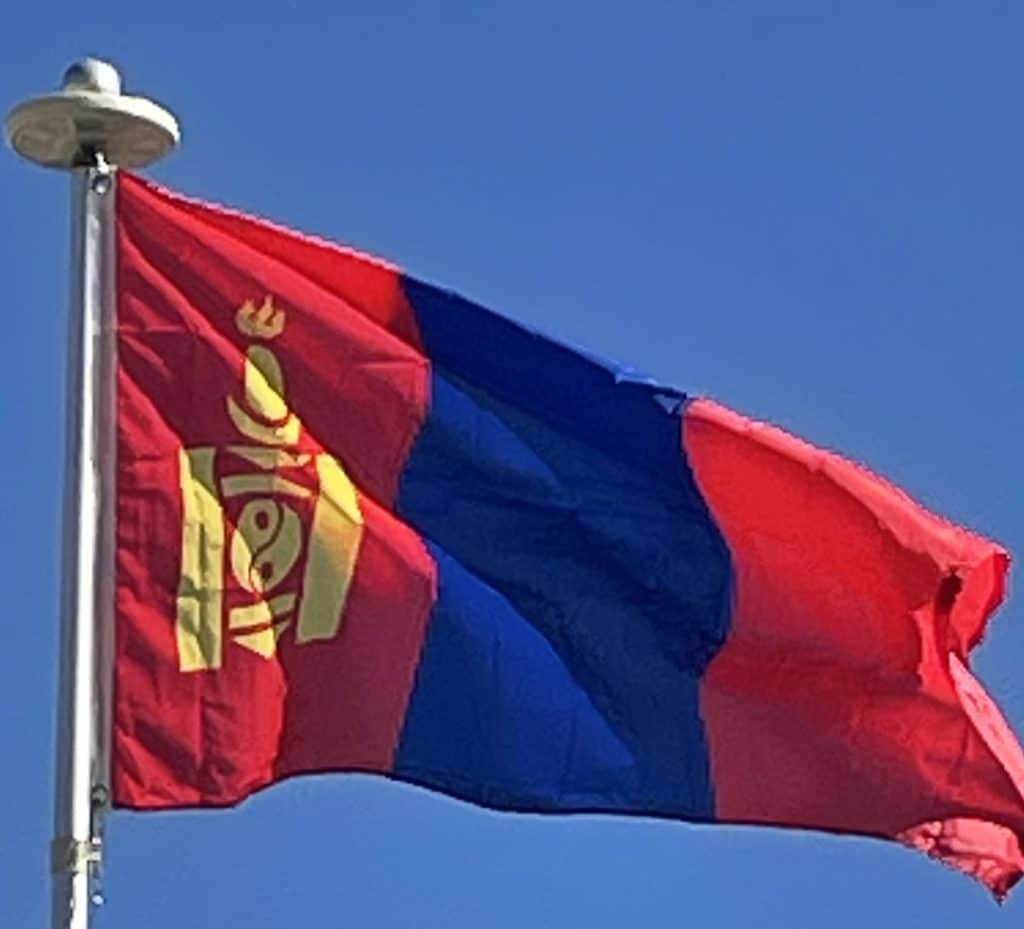
The geography of Mongolia is varied, with the Gobi Desert to the south and cold, mountainous regions to the north and west. Much of Mongolia consists of the Mongolian-Manchurian grassland steppe, with forested areas accounting for 11.2% of the total land area, a higher percentage than the Ireland (10%). The whole of Mongolia is considered to be part of the Mongolian Plateau. The highest point in Mongolia is the Khüiten Peak in the Tavan bogd massif in the far west at 4,374 m (14,350 ft). The basin of the Uvs Lake, shared with Tuva Republic in Russia, is a natural World Heritage Site.
Economy:
Economic activity in Mongolia has long been based on herding and agriculture, although development of extensive mineral deposits of copper, coal, molybdenum, tin, tungsten and gold have emerged as a driver of industrial production. Besides mining (21.8% of GDP) and agriculture (16% of GDP), dominant industries in the composition of GDP are wholesale and retail trade and service, transportation and storage, and real estate activities. The informal economy is estimated to be at least one-third the size of the official economy. As of 2006, 68.4% of Mongolia’s exports went to the PRC, and the PRC supplied 29.8% of Mongolia’s imports.
Minerals represent more than 80% of Mongolia’s exports, a proportion expected to eventually rise to 95%. Fiscal revenues from mining represented 21% of government income in 2010 and rose to 24% in 2018. About 3,000 mining licenses have been issued. Mining continues to rise as a major industry of Mongolia as evidenced by the number of Chinese, Russian and Canadian firms starting mining businesses in Mongolia.

In 2009, the government negotiated an “investment agreement” with Rio Tinto and Ivanhoe Mines to develop the Oyu Tolgoi copper and gold deposit, the biggest foreign-investment project in Mongolia, expected to account for one-third of Mongolia’s GDP by 2020. In March 2011, six big mining companies prepared to bid for the Tavan Tolgoi area, the world’s largest untapped coal deposit. According to Erdenes MGL, the government body in-charge of Tavan Tolgoi, ArcelorMittal, Vale, Xstrata, U.S. coal miner Peabody, a consortium of Chinese energy firm Shenhua and Japan’s Mitsui & Co, and a separate consortium of Japanese, South Korean and Russian firms are the preferred bidders.
In 2002, about 30% of all households in Mongolia lived from breeding livestock. Most herders in Mongolia follow a pattern of nomadic or semi-nomadic pastoralism. Due to the severe 2009–2010 winter, Mongolia lost 9.7 million animals, or 22% of total livestock. This immediately affected meat prices, which increased twofold; the GDP dropped 1.6% in 2009.[99]
Transportation:
While the Mongolian horse continues to be revered as the national symbol, they are rapidly being replaced by motorized vehicles.
The Trans-Mongolian Railway is the main rail link between Mongolia and its neighbors. It begins at the Trans-Siberian Railway in Russia at the town of Ulan-Ude, crosses into Mongolia, runs through Ulaanbaatar, then passes into China at Erenhot where it joins the Chinese railway system. A separate railroad link connects the eastern city of Choibalsan with the Trans-Siberian Railway. However, that link is closed to passengers after the Mongolian town of Chuluunkhoroot.
